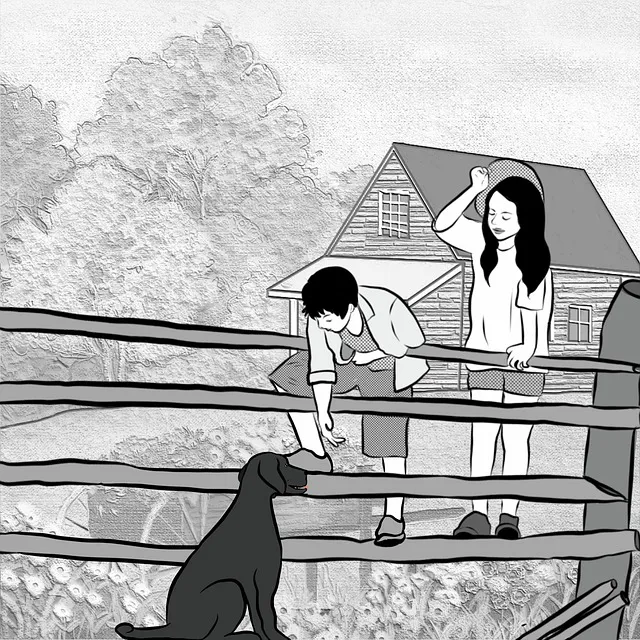Weatherproof design is crucial for outdoor spaces, especially heated dog houses, offering protection against harsh weather conditions while maintaining comfort and energy efficiency. Key elements include waterproof materials, secure joints, efficient insulation, and strategic ventilation. Heated dog houses provide a safe sanctuary for pets during extreme winters, mimicking indoor environments to prevent hypothermia. With proper insulation, these structures remain comfortable year-round, reducing energy costs and environmental impact. Regular maintenance is vital for optimal performance and longevity.
Weatherproof design is essential for ensuring your pet’s comfort and safety, especially in regions with extreme climates. This article explores the principles and benefits of weatherproof design, focusing on heated dog houses as a solution for harsh winters and summers. We’ll guide you through key components, from insulation and ventilation to durable materials and regular maintenance, to create a cozy sanctuary for your furry friend. Discover how these features contribute to the overall well-being of your pet, particularly in heated dog houses, enhancing their quality of life year-round.
Understanding Weatherproof Design: Principles and Benefits

Weatherproof design is an essential consideration for creating outdoor spaces and structures that can withstand various weather conditions, ensuring longevity and comfort. In the context of a heated dog house, understanding this design principle becomes crucial to provide a safe and cozy haven for pets during cold seasons. The primary goal is to create a building envelope that protects its inhabitants from harsh elements such as rain, snow, wind, and extreme temperatures.
By incorporating weatherproof design principles, architects and builders can achieve several benefits. It includes improved structural integrity, reduced energy loss (in the case of heated spaces), and enhanced user experience. For instance, a well-designed dog house with waterproof materials, secure joints, and efficient insulation can maintain a consistent temperature, making it comfortable for dogs without excessive heating or cooling efforts. This approach not only benefits pets but also saves energy costs and reduces environmental impact compared to conventional methods.
The Role of Heated Dog Houses in Extreme Weathers

In extreme weather conditions, maintaining the comfort and safety of pets becomes a top priority for pet owners. One innovative solution that has gained traction is the use of heated dog houses. These specialized structures are designed to provide a warm sanctuary for dogs during chilly winters, ensuring they remain comfortable even in sub-zero temperatures. By incorporating advanced heating systems, these dog houses mimic indoor environments, offering a sense of security and well-being for pets that might otherwise struggle outdoors.
The role of heated dog houses goes beyond mere comfort. They play a crucial part in pet safety by preventing hypothermia and other weather-related health issues. In regions with harsh winters, where temperatures can drop dramatically, these heated shelters are game-changers. Pet owners can rest easy knowing their furry friends have a protected space to retreat to, ensuring they remain healthy and happy regardless of the weather.
Key Components for Building a Weatherproof Dog House

When designing or building a weatherproof dog house, there are several key components that ensure your pet’s comfort and safety during all seasons. One of the most critical elements is insulation. A well-insulated dog house maintains a consistent temperature, protecting your dog from extreme cold and heat. This is especially important for heated dog houses, which require proper insulation to prevent thermal loss and maintain the desired warmth.
Additionally, a robust water-resistant exterior is essential. Use materials like treated wood or vinyl siding that can withstand moisture and prevent water penetration. A tight seal around doors and windows, along with a sloped roof to shed water, further enhances weatherproofing. For extra protection, consider adding a removable or heated floor pad to shield your dog from cold, damp ground. These features contribute to creating a durable, comfortable sanctuary for your pet, ensuring they’re protected from the elements all year round.
Insulation: Keeping Your Pet Cozy During All Seasons

Insulation plays a vital role in creating a weatherproof design, especially for outdoor spaces shared with pets. In colder seasons, ensuring your pet has access to a warm sanctuary is essential. A heated dog house, specifically designed for insulation, can be a game-changer. It provides a cozy retreat, protecting them from harsh weather conditions and preventing heat loss.
This aspect of weatherproofing is equally crucial in warmer months. Insulation helps regulate the interior temperature, keeping pets cool during hot summers. Unlike a typical dog house, a well-insulated heated option can provide a comfortable environment, ensuring your pet stays safe and happy year-round.
Ventilation Systems: Balancing Airflow and Temperature

In weatherproof design, ventilation systems play a crucial role in maintaining comfortable indoor environments, especially for structures like heated dog houses. Balancing airflow and temperature is an art, ensuring pets or inhabitants stay cozy yet well-ventilated. Modern systems employ advanced technologies to control temperature, allowing for precise adjustments based on external conditions. For instance, smart thermostats can learn patterns and automatically adjust settings, maintaining optimal temperatures even during extreme weather changes.
Effective ventilation involves strategic placement of vents and fans. By directing warm air out while drawing in cooler air, these systems create a continuous flow, preventing stagnant spaces that could lead to mold or unpleasant odors. In the case of heated dog houses, proper ventilation ensures excess heat dissipates, avoiding potential health risks for animals, while still keeping the space comfortable. This balance is key to creating a safe and habitable environment, regardless of seasonal weather conditions outside.
Durable Materials: Withstanding Elements Outside

When designing a heated dog house, selecting durable materials is paramount to ensure it can withstand the elements outside. The exterior should be crafted from robust materials like heavy-duty metal or treated wood, capable of resisting rain, snow, and strong winds. These materials not only protect the dog from harsh weather but also prevent water damage, ensuring a dry and comfortable living space for your pet.
The roof, in particular, requires careful consideration as it faces the brunt of nature’s force. Inclined roofs are recommended to shed water effectively, while high-quality shingles or metal panels can add an extra layer of protection. Additionally, sealing all joints and gaps ensures no moisture seeps in, maintaining a consistent temperature inside the dog house.
Accessorizing for Optimal Comfort and Safety

Incorporating weatherproof design elements goes beyond just shielding structures from the elements; it’s about enhancing comfort and safety for all inhabitants, including pets. For dog owners, providing a heated dog house is an excellent way to ensure their furry friends stay cozy during cold winter months. This accessory isn’t just a luxury; it’s a necessity for many breeds not accustomed to harsh climates. Heated dog houses offer optimal insulation, preventing temperature drops that can be hazardous to pet health.
When accessorizing for comfort and safety, consider the specific needs of your pet. A heated dog house should have an efficient heating system that circulates warm air consistently without consuming excessive energy. It should also be designed with ventilation in mind to prevent overheating during warmer seasons. Additionally, a water-resistant yet breathable material ensures protection from rain and snow while allowing moisture vapor to escape, maintaining a comfortable humidity level inside the shelter.
Regular Maintenance: Ensuring Longevity of Heated Dog Houses

Regular maintenance is key to keeping your heated dog house in top condition and extending its lifespan. These structures, while designed to withstand various weather conditions, still require care to maintain optimal performance and comfort for your furry friend. A simple cleaning routine, including removing any debris or accumulations inside, will go a long way in preventing potential issues.
Check the heating element regularly to ensure it functions correctly, as well as monitor the seal around the entrance to prevent heat loss. Seasonal adjustments are also important; during colder months, ensure the house is properly insulated and the heating system is maintained. Conversely, in warmer seasons, consider ventilation improvements to keep the interior cool. Regular maintenance not only enhances the comfort of your dog but also ensures a longer lifespan for your heated dog house investment.
